Polymeric Ionic Liquids as Effective Biosensor Components †
Abstract
1. Introduction
2. PILs in Medicine
3. PILs as Electronic Skin
4. PIL Actuators in the Dielectric Elastomers
5. Conclusions
- Potentially, PILs-based sensors can detect various movements such as loads, detect human joint movements and monitor heart rate in real time, creating huge prospects for the use of high-performance wearable sensor platforms. In addition, an effective drug delivery system that increases total absorption using PILs can serve as a reliable option to solve this problem.
- Artificial electronic skin based on PILs demonstrates high potential not only as a registration of body signals, but also as an effective wound dressing with a high antibacterial effect. The problem of durability and stability of such materials can and should be solved in the coming years.
- Polymer actuators are indispensable in many applications, and the use of PILs is an appropriate approach for developing electric actuators capable of meeting a wide variety of application requirements in terms of force, strain, and click time. Currently, further thorough research and fabrication is needed to fully understand the characteristics of the actuator, in particular, the force generated, and the stability of the actuators over time, and to relate this behavior to the sizes of cations and anions. PILs is a particularly relevant and in-demand component for the development of intelligent hybrid materials for use in the actuators, as they are relatively simple to prepare and have a number of individual characteristics. Printing technologies are possible and necessary not only for implementation in real-world applications, but also for increasing scalability.
Author Contributions
Funding
Conflicts of Interest
References
- Lebedeva, O.; Kultin, D.; Kustov, L. Advanced Research and Prospects on Polymer Ionic Liquids: Trends, Potential and Application. Green Chem. 2023, 25, 9001–9019. [Google Scholar] [CrossRef]
- Lebedeva, O.; Kultin, D.; Kustov, L. Polymeric Ionic Liquids: Here, There and Everywhere. Eur. Polym. J. 2024, 203, 112657. [Google Scholar] [CrossRef]
- Zhang, W.; Li, Z.; Zhang, Q.; Zheng, S.; Zhang, Z.; Chen, S.; Wang, Z.; Zhang, D. Ionic Conducting Hydrogels as Biomedical Materials: Classification, Design Strategies, and Skin Tissue Engineering Applications. J. Biomater. Sci. Polym. Ed. 2025, 36, 939–962. [Google Scholar] [CrossRef] [PubMed]
- Yang, Y.; Lou, J.; Qi, D.; Zhao, C. Flexible and Transparent Humidity Sensors Based on Hyperbranched Poly(Ionic Liquid)s for Wearable Sensing. Sens. Actuators B Chem. 2024, 404, 135267. [Google Scholar] [CrossRef]
- Xu, M.; Shen, X.; Li, S.; Zhu, H.; Cheng, Y.; Lv, H.; Wang, Z.; Lou, C.; Song, H. Skin-Inspired Gradient Ionogels Induced by Electric Field for Ultrasensitive and Ultrafast-Responsive Multifunctional Ionotronics. J. Mater. Chem. A 2024, 12, 1036–1046. [Google Scholar] [CrossRef]
- Lin, R.; Qian, J.; Liu, T.; Liu, W.; Bo, Y.; Wang, Z.; Zhang, J.; Wu, Y. Biocompatible Ionic Liquid Self-Assembled Transdermal Delivery System (P-M IL/AKE) for Significantly Improved Skin Photoaging and Reduced Wrinkles. J. Mol. Liq. 2024, 410, 125484. [Google Scholar] [CrossRef]
- Liu, P.; Chen, X.; Lei, Z.; Chen, K.; Jin, W.; Wang, W.; Liang, S.; Yu, J.; Ao, M.; Yu, L. Non-Releasing Poly (Ionic Liquid) Based Hydrogel Accelerates Diabetic Wound Healing. Colloids Surf. B Biointerfaces 2025, 245, 114218. [Google Scholar] [CrossRef] [PubMed]
- Song, W.; Chen, H.; Lu, P.; Miao, Z.; Zhao, Y.; He, Z.; Ren, Z.; Nica, V.; Qian, L. Polymeric Ionic Liquid Modifier as Ion-Induced Crosslinker and Functional Enhancer: Facile Fabrication of Multifunctional Gelatin Hydrogels for Flexible Electronics. Int. J. Biol. Macromol. 2025, 318, 145296. [Google Scholar] [CrossRef] [PubMed]
- Du, H.; Xu, Q.; Wang, J.; Yang, L.; You, F. Imidazolium-Based Poly(Ionic Liquid)/Poly(Vinyl Alcohol) Multifunctional Supramolecular Gels with Self-Healing, Shape Memory, and Strain Sensing. J. Mol. Liq. 2025, 417, 126586. [Google Scholar] [CrossRef]
- Wei, Q.; Liao, X.; Cui, Z.; Wang, Y.; Zhang, W.; Jiang, Y.; Hu, Z. Facile Preparation of Carboxymethyl Chitosan/Dextran/Poly(Ionic Liquid)-Based Hydrogel with Intrinsic Antibacterial and Antioxidant Properties for Accelerating Skin Wound Healing. Int. J. Biol. Macromol. 2025, 304, 140851. [Google Scholar] [CrossRef] [PubMed]
- Zhou, H.; Zhao, W.; Zhao, L. Radiation Synthesis of Covalently/Non-Covalently Coupled All Ionic Liquid-Based Ionogels with Rapid Self-Healing, Environmental Tolerance for Multifunctional Ionic Skin. Chem. Eng. J. 2024, 489, 151163. [Google Scholar] [CrossRef]
- Romero-Antolín, J.A.; Gómez-Cerezo, N.; Manzano, M.; Pablos, J.L.; Vallet-Regí, M. Anti-Inflammatory and Antibacterial Hydrogel Based on a Polymerizable Ionic Liquid. Acta Biomater. 2025, 196, 78–92. [Google Scholar] [CrossRef] [PubMed]
- Liu, C.; Yoshio, M. Ionic Liquid Crystal–Polymer Composite Electromechanical Actuators: Design of Two-Dimensional Molecular Assemblies for Efficient Ion Transport and Effect of Electrodes on Actuator Performance. ACS Appl. Mater. Interfaces 2024, 16, 27750–27760. [Google Scholar] [CrossRef] [PubMed]
- Kesküla, A.; Elhi, F.; Otero, T.F.; Kiefer, R. Simultaneous Electropolymerization of Pyrrole and Anionic or Cationic Polymerizable Monomeric Ionic Liquids. Linear Actuation of the Attained Materials. React. Funct. Polym. 2024, 198, 105892. [Google Scholar] [CrossRef]
- Terasawa, N.; Monobe, H. High-Performance Transparent Hybrid (Ionic and Dielectric) Gel Actuator System Based on Poly(Vinyl Chloride)/Dibutyl Adipate/Ionic Liquid Gels Operating at a Low Applied Voltage. Mater. Adv. 2024, 5, 4715–4719. [Google Scholar] [CrossRef]
- Li, R.; Mbonu, C.; Akcora, P. Structure-Dependent Ionic Conductivity in Poly(Ionic Liquid)-b-Poly(Methyl Methacrylate)-Grafted Nanoparticles. ACS Appl. Polym. Mater. 2025, 7, 3853–3862. [Google Scholar] [CrossRef]
- Fernandes, L.C.; Correia, D.M.; Costa, C.M.; Lanceros-Mendez, S. Recent Advances in Ionic Liquid-Based Hybrid Materials for Electroactive Soft Actuator Applications. Macromol. Mater. Eng. 2025, 310, 2400279. [Google Scholar] [CrossRef]
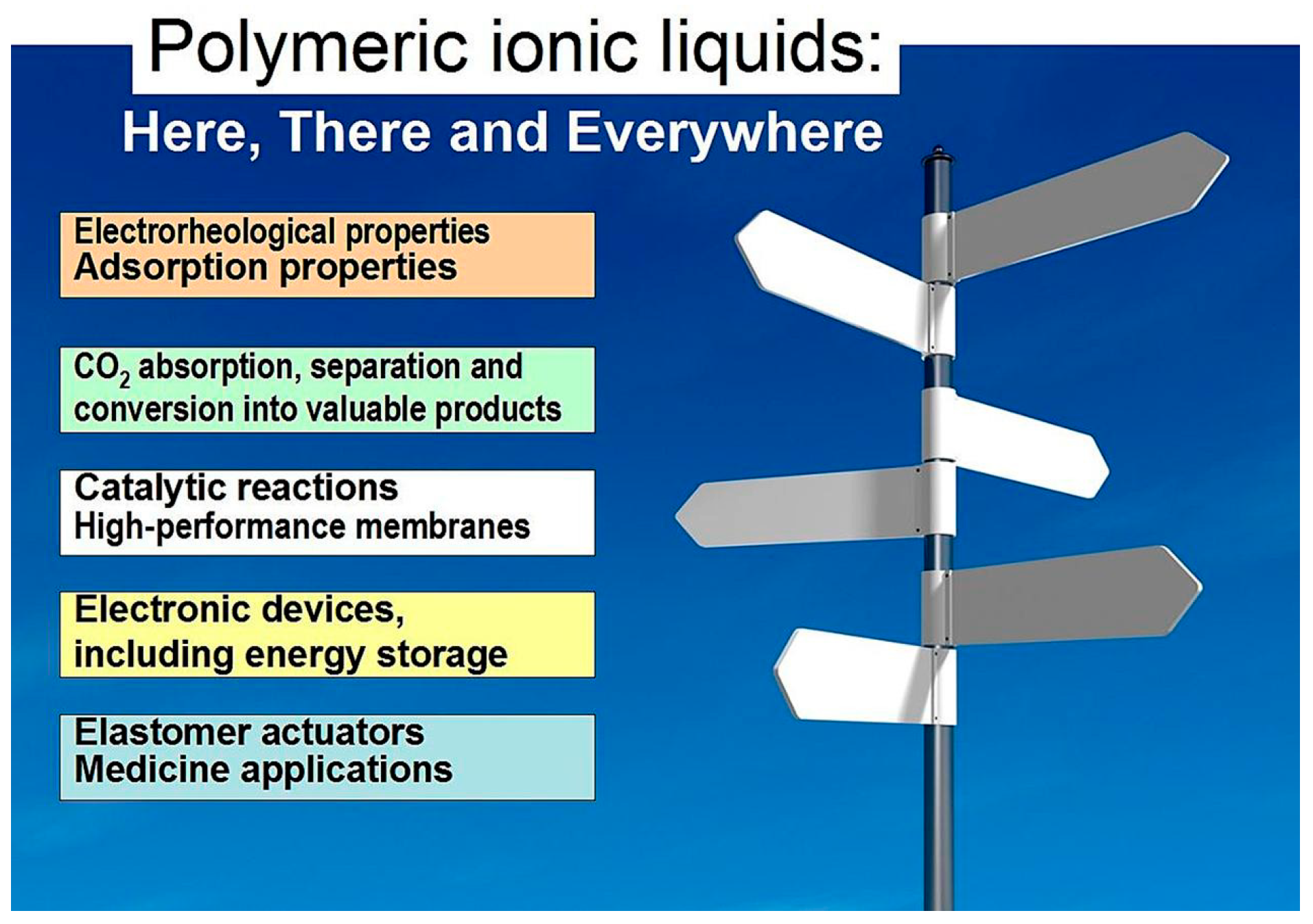
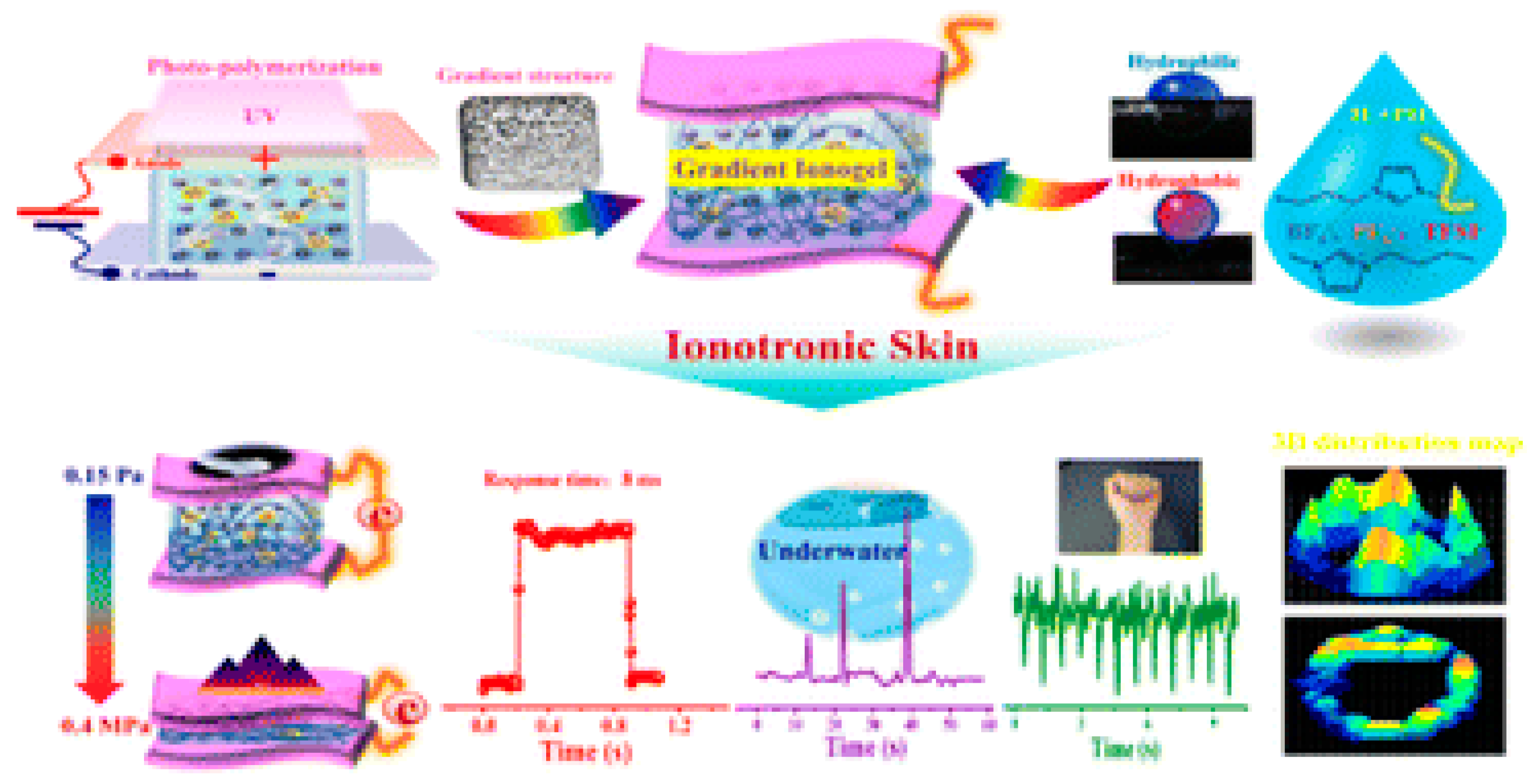
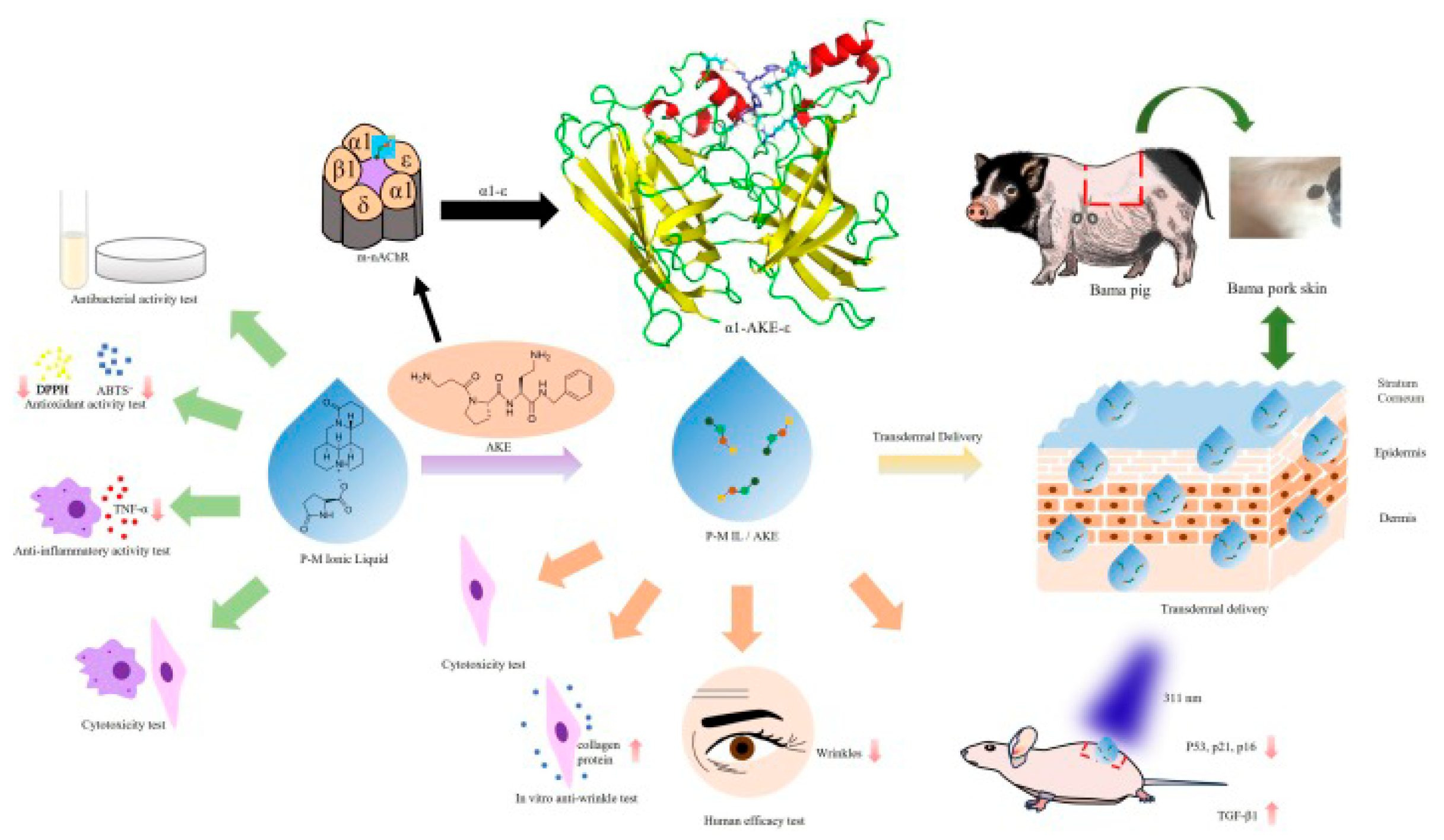
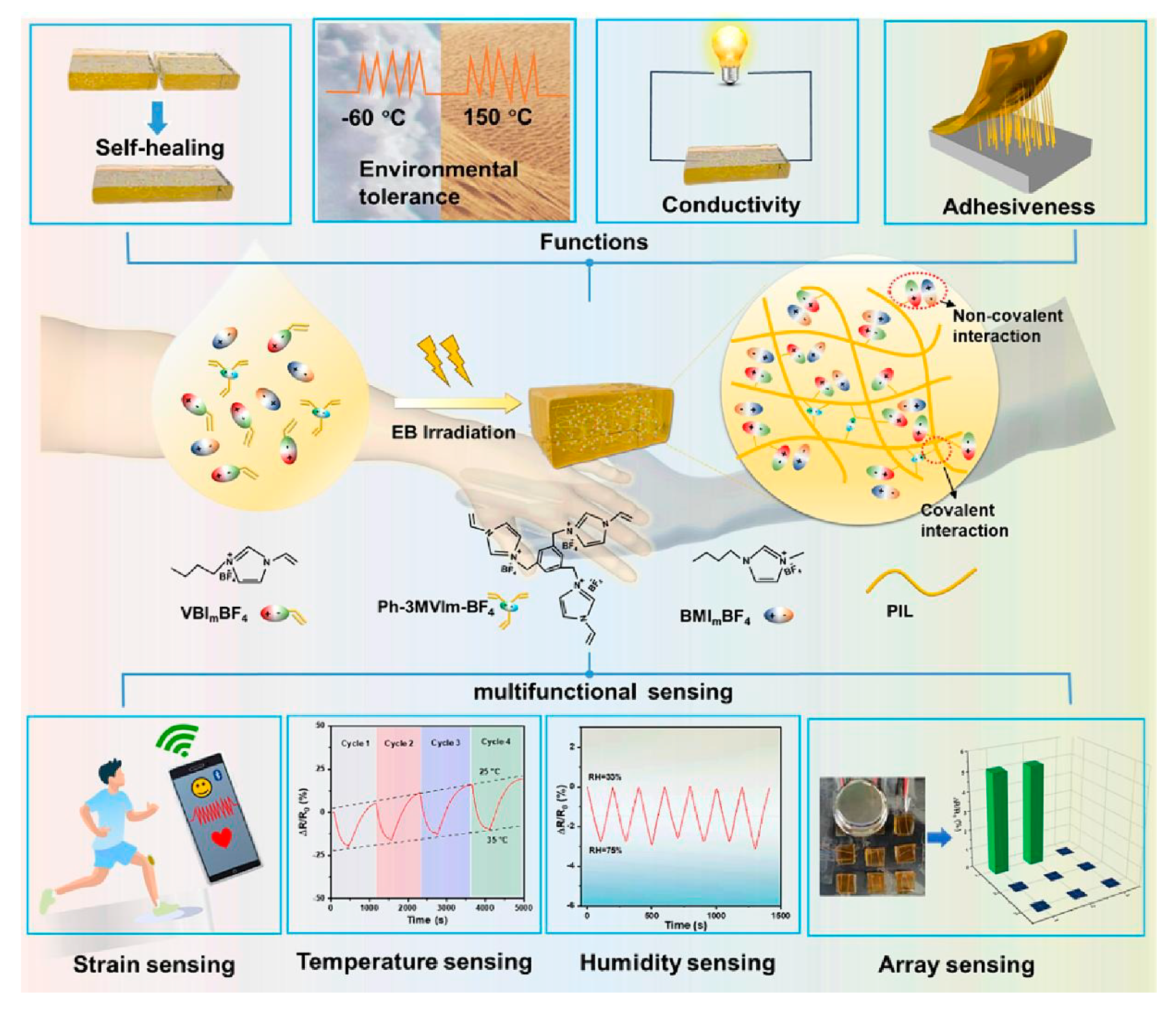


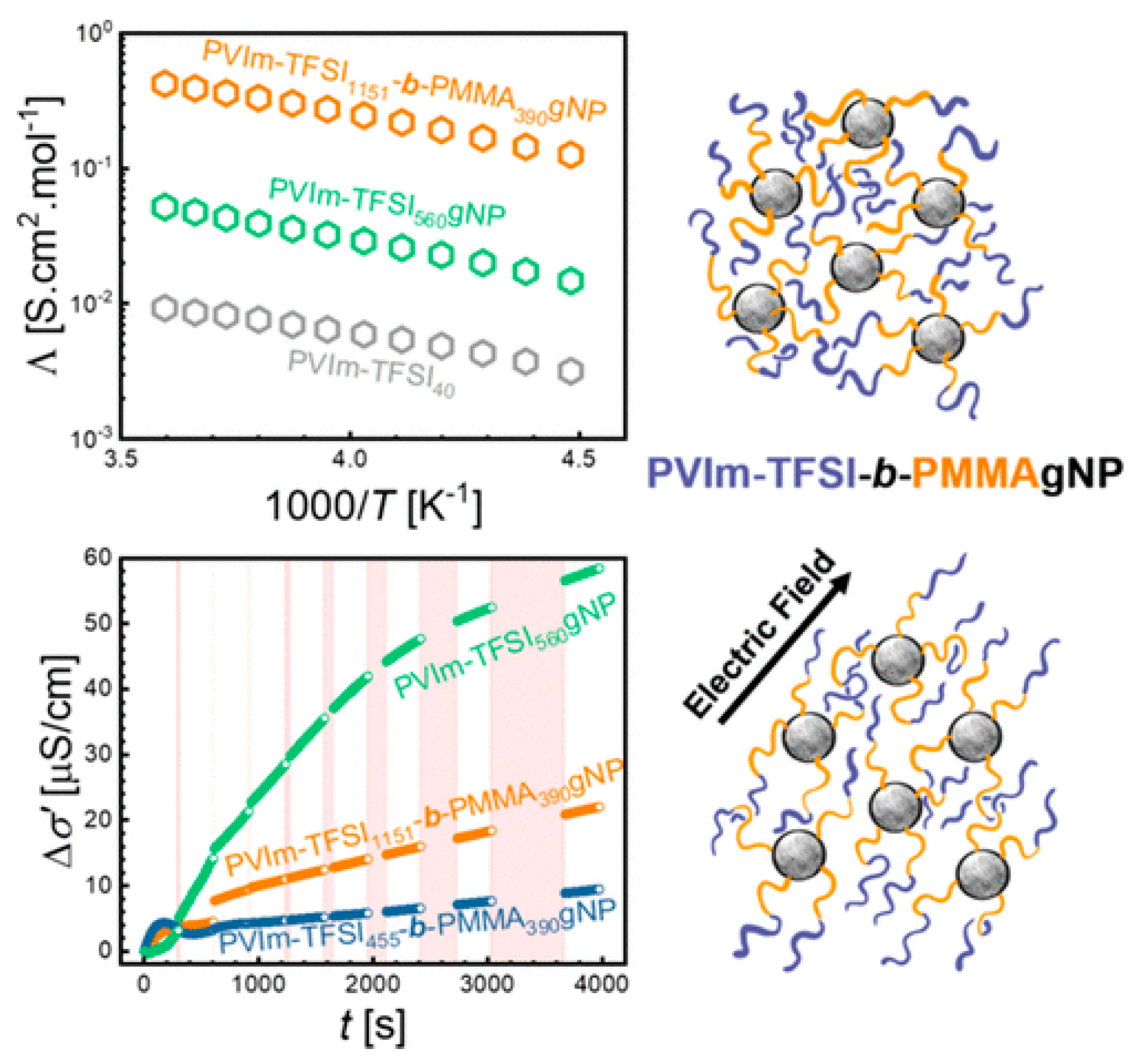
Disclaimer/Publisher’s Note: The statements, opinions and data contained in all publications are solely those of the individual author(s) and contributor(s) and not of MDPI and/or the editor(s). MDPI and/or the editor(s) disclaim responsibility for any injury to people or property resulting from any ideas, methods, instructions or products referred to in the content. |
© 2025 by the authors. Licensee MDPI, Basel, Switzerland. This article is an open access article distributed under the terms and conditions of the Creative Commons Attribution (CC BY) license (https://creativecommons.org/licenses/by/4.0/).
Share and Cite
Kultin, D.; Lebedeva, O.; Kuznetsova, I.; Kustov, L. Polymeric Ionic Liquids as Effective Biosensor Components. Eng. Proc. 2025, 106, 4. https://doi.org/10.3390/engproc2025106004
Kultin D, Lebedeva O, Kuznetsova I, Kustov L. Polymeric Ionic Liquids as Effective Biosensor Components. Engineering Proceedings. 2025; 106(1):4. https://doi.org/10.3390/engproc2025106004
Chicago/Turabian StyleKultin, Dmitry, Olga Lebedeva, Irina Kuznetsova, and Leonid Kustov. 2025. "Polymeric Ionic Liquids as Effective Biosensor Components" Engineering Proceedings 106, no. 1: 4. https://doi.org/10.3390/engproc2025106004
APA StyleKultin, D., Lebedeva, O., Kuznetsova, I., & Kustov, L. (2025). Polymeric Ionic Liquids as Effective Biosensor Components. Engineering Proceedings, 106(1), 4. https://doi.org/10.3390/engproc2025106004






